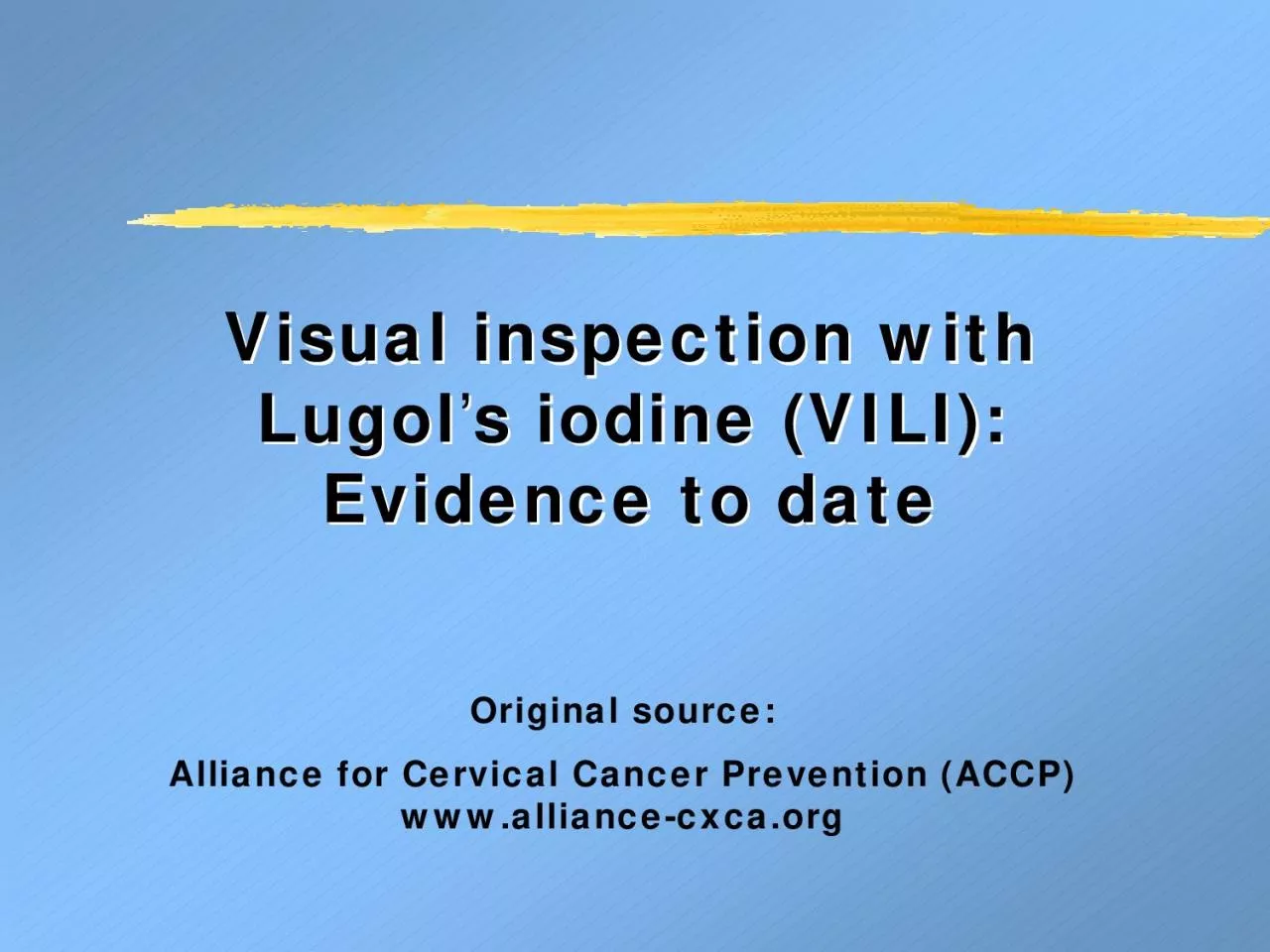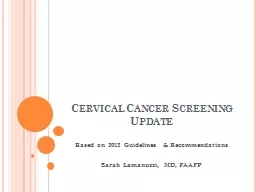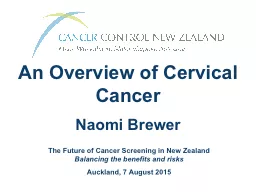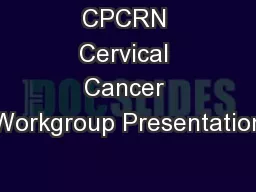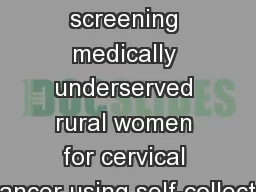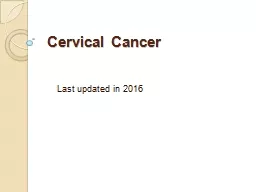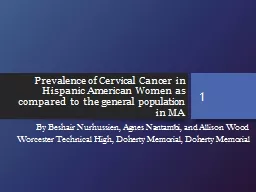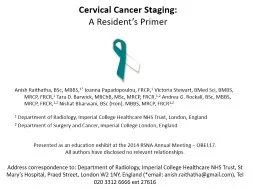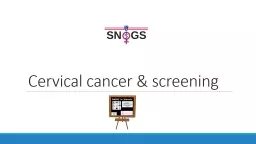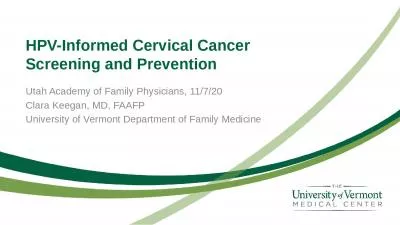PDF-Alliance for Cervical Cancer Prevention ACCP
Author : callie | Published Date : 2021-07-05
OverviewDescription of VILI and how it worksInfrastructure requirementsWhat test results meanTest performanceStrengths and limitationsProgram implications in lowresource
Presentation Embed Code
Download Presentation
Download Presentation The PPT/PDF document "Alliance for Cervical Cancer Prevention ..." is the property of its rightful owner. Permission is granted to download and print the materials on this website for personal, non-commercial use only, and to display it on your personal computer provided you do not modify the materials and that you retain all copyright notices contained in the materials. By downloading content from our website, you accept the terms of this agreement.
Alliance for Cervical Cancer Prevention ACCP: Transcript
Download Rules Of Document
"Alliance for Cervical Cancer Prevention ACCP"The content belongs to its owner. You may download and print it for personal use, without modification, and keep all copyright notices. By downloading, you agree to these terms.
Related Documents

